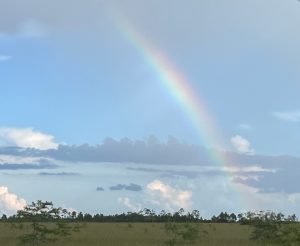Summertime Thunderstorms In The Everglades

Afternoon thunderstorms are a common occurrence in the Everglades, particularly during the wet season, which typically runs from May to October. These thunderstorms are a result of the region’s subtropical climate, abundant moisture, and the interaction of warm, humid air with the surrounding landscape.
The Everglades’ flat topography and extensive waterways play a role in the formation of afternoon thunderstorms. As the sun heats the land and the surrounding air, warm, moist air rises, forming cumulus clouds. The rising air creates an updraft, leading to the development of towering cumulonimbus clouds, which are associated with thunderstorms.
Typically, the thunderstorms in the Everglades occur during the late afternoon or early evening, when the heat and humidity levels are at their peak. The storms can be intense, with heavy rain, thunder, lightning, and gusty winds. The rainfall from these storms helps sustain the Everglades’ unique hydrology and is essential for the health of the ecosystem.
These thunderstorms often provide temporary relief from the heat and humidity, cooling down the environment. They also contribute to the replenishment of water levels in marshes, wetlands, and the overall water supply of the Everglades. Additionally, the rains provide drinking water for wildlife and promote the growth of vegetation.
While afternoon thunderstorms can be a fascinating natural phenomenon to witness, it is important to be aware of their potential hazards. Lightning poses a significant risk, so it is advisable to seek shelter indoors or in a vehicle during a thunderstorm. Flash flooding is also a concern, as heavy rainfall can quickly inundate low-lying areas and cause water levels to rise rapidly.
If you plan to visit the Everglades during the wet season, it’s a good idea to be prepared for afternoon thunderstorms by bringing appropriate rain gear, staying informed about weather conditions, and being flexible with your outdoor activities. Always prioritize safety and follow any guidance or warnings provided by park authorities.
Overall, afternoon thunderstorms in the Everglades are an integral part of the region’s climate and ecosystem dynamics. They contribute to the overall health and vitality of this unique wilderness, creating a dynamic and ever-changing natural environment.

